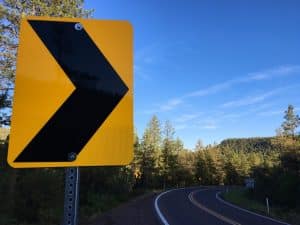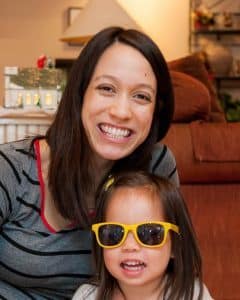In Real Life: How Can CBE Systems Ensure Learning Is Deep, Ongoing, and Integrated?
CompetencyWorks Blog
 This article is the fourth in a nine-part “In Real Life” series based on the complex, fundamental questions that practitioners in competency-based systems grapple with “in real life.” Links to the other posts can be found at the end of this article.
This article is the fourth in a nine-part “In Real Life” series based on the complex, fundamental questions that practitioners in competency-based systems grapple with “in real life.” Links to the other posts can be found at the end of this article.
Long before she had GPS on her mobile phone, my mother would navigate for our family road trips using turn-by-turn directions printed out from the American Automobile Association. While my father drove, she would call out the next set of turns so that he always knew where he was headed and what to do when he got there.
In much the same way, growing numbers of educators across the country are building competency-based systems designed to help students navigate the learning journey ahead. Such systems define learning targets or competencies that serve as guideposts for what students should know and be able to do as they progress through their learning. Many systems also sequence competencies (although not always linearly) into instructional learning progressions and utilize technology to display students’ progress in real time.
The goal is transparency: students need not wonder what is expected of them, but instead have a clear roadmap for the knowledge, skills, and mindsets they are expected to master next.
At the same time, some question whether such transparency has a downside of reducing learning to a shallow check-list of tasks that students race through to complete. After all, if we improve highway visibility, won’t cars be prone to speeding?
Competency-based systems must be thoughtfully designed in order to guard against the unintended consequence of what Courtney Belolan, instructional coach for RSU2 in Maine, calls a “checklist mindset,” where students only care about “completion, a check in the box to show they have finished that target and can move on to the next.” RSU2 Superintendent Bill Zima similarly warns that “education cannot become a 19-point tune-up, marking that a student needs this, so do that, and then check it off.” Instead, Zima says that competency-based systems should use competencies and progressions “to create more deep learning opportunities that require students to apply the knowledge learned.”
Thus, while the journey of learning should be transparent, we also want to ensure it remains deep, integrated, meaningful, and ongoing.

To better understand how competency-based systems balance the desire for transparency with the need for depth, I sat down with Esther Soliman, the Administrator for Linked Learning, CTE, and Work Experience for the Los Angeles Unified School District (LAUSD).
LAUSD is the second largest school district in the nation, enrolling 640,000 students from diverse backgrounds. Linked Learning is an approach to education that seeks to increase relevance by orienting learning around career pathways. Each Linked Learning high school in LAUSD develops a pathway that represents a single industry sector and weaves the industry theme throughout their academics. Teachers collaborate with working professionals to create interdisciplinary project-based learning experiences that resemble the real world of work.
Soliman had been a teacher for decades when she became Principal for the first Linked Learning-certified site in LAUSD. From this role, she was asked to bring Linked Learning across the district, taking up her current position in 2012.
In our interview, adapted below, Soliman describes how the Linked Learning pathways in LAUSD have adapted a competency-based approach while working to ensure that student learning is deep, ongoing, and integrated – not a “check the box” exercise.
Jennifer Poon: How did LAUSD come to discover – and desire – the competency-based elements of the Linked Learning model?
Esther Soliman: Linked Learning was introduced to LAUSD in 2008 when the James Irvine Foundation funded 9 districts to pilot Linked Learning in California including LAUSD Local District 4. Since then, it has slowly expanded across the district from the ground-up. People are drawn to the model because it engages students in authentic learning experiences. It gives people an opportunity to answer the perennial question, “Why do I need to learn this?” The question deserves an answer.
Some of the elements that make Linked Learning “competency-based” include the definition of clear learning objectives and the use of meaningful assessments to measure student progress. Linked Learning pathways follow the LAUSD Student Graduate Profile, which can be treated more perfunctorily in other schools but is taken seriously by Linked Learning schools. Our schools have Pathway Outcomes tied to the Student Graduate Profile, and from there, teachers create Class Outcomes and Assignment Outcomes. Students understand the connection between these and the competencies they must obtain by the time they graduate.
Through project-based learning (PBL) and other assessments, students show their mastery throughout the year. The culmination is a portfolio defense at the end of the school year.
At first, only our 12th graders completed a portfolio defense, but quickly our 11th and 10th grade teachers came on board. Our teachers saw how it demonstrated what students know and are able to do. For example, one of our 10th-grade teachers observed a student defending her portfolio and said, “I understand now. I thought my kids were getting it and now I realize that they’re really not!” He knew he had to help them to higher levels of mastery.
Students love the model because it gives them an opportunity to feel successful. Even when the feedback on their projects shows them areas to improve on, they also see where they are competent and ready to move on. It allows us to be more honest and transparent with students about where they are and what they need to pass all areas. We also see students wanting to help each other so that everyone meets the Pathway Outcomes in the end.
JP: How do you ensure that student learning is deep and ongoing – not just a shallow checklist of Pathway Outcomes to be completed?
ES: Project-based learning is a huge component of our model, which allows students to go deep in their learning. Projects can take between one and three months. Students are able to choose their topic and often work in groups at the outset. All our projects are interdisciplinary in academics with the career pathway at the center.
For example, for a writing assignment at our new Media Pathway in Hollywood, students chose their topic, conducted independent research, and then brought in professionals from the media industry to give feedback. Students then continued to revise their papers throughout the year with ongoing feedback until it became a final paper. At that point, they brought the paper into the realm of media arts in some way. Even then, those that didn’t meet mastery had an opportunity to revise. Every student has the opportunity to reach mastery.
JP: How often do these deeper learning experiences occur?
ES: In some schools, these occur all the time. Minimally, schools do one large PBL once each semester.
JP: Do all students have access to the deeper learning experiences, including those that are behind “grade level”?
All students complete the PBLs. For those behind grade level, we work on bringing the right sets of students together in groupings to assist one another and build skills together. A great example happened at our feeder arts program, where one group was divvying up tasks. A high-achieving student said to another student, who was fresh out of an English as a Second Language program, “You’re an excellent illustrator, please do the drawings. But I also need you to help write the paper. I’m good at writing, so I’ll help you, but I need your help with it too.” This is the spirit of collaboration we encourage.
JP: What opportunities do students have to use their learning to directly address problems that are important to their families or communities?
ES: This happens all the time through the PBLs and portfolio defense. For example, one of our students was able to use a project to advocate for her parent, who is a street food vendor who kept getting ticketed. Through her PBL, she learned how city council and administration work. In her English class, she and her classmates interviewed street vendors and politicians alike and wrote persuasive essays. They gave speeches at City Hall and, in the end, succeeded in changing the law. Her “school” work made an actual difference in her world.
JP: How do you support your teachers to ensure that student learning is deep and ongoing?
ES: We offer a lot of professional development on this. We work on concepts like Complex Learning, where teachers are learning how to group students effectively and how to have them play different and complimentary roles in the groups. Teachers are learning to coach students in ways where they’re not just telling them the answers but supporting productive struggle.
The move toward PBLs with career pathways at the center was a major instructional shift for our teachers. We wanted to ensure high-quality PBLs, so last year we collected over 120 that were in use and reviewed them for rigor. We learned a lot through this process. The pathways that were Linked Learning Gold Certified have been practicing this for a while and had PBLs that were rich and exciting, the result of years of development and honing. For others, the rigor wasn’t quite there.
As a result, this year we brought in people from Envision Learning Partners to facilitate professional development to refine the PBLs. We’re especially focused on the math component, realizing that for some projects, if the math can’t be integrated at a high level of rigor, the math should be separated out into its own PBL. We’re also working on increasing our expectations for argumentations and research, ensuring that student learning in this area is more challenging and complex.
Our teachers are getting constant feedback from each other and from students through their self-reflections. We encourage teachers to reflect and strengthen their PBLs continuously and not just do the same thing every year.
—
Read the rest of the “In Real Life” series at the following links:
- Series Introduction
- Part 1: Who Gets to Decide Which Student Outcomes Matter?
- Part 2: Designing Outcomes Aimed for Equity
- Part 3: How can CBE systems ensure learning is deep, ongoing, and integrated?
- Part 4: How feedback loops and student supports help ensure learning is deep, ongoing, and integrated.
- Part 5: How do CBE systems manage differences in pace?
- Part 6: How do CBE systems support all students to reach mastery?
- Part 7: How do we know if competency-based education is working?
—

Jennifer Poon’s mission is to effect social justice by modernizing the public education system to be more responsive to the needs of all learners, especially those most historically underserved. Currently, she is consulting on projects of interest while serving as a Fellow with the Center for Innovation in Education.